Do you have an interest in creating beautiful sculptures and wood carvings? Freehand carving techniques are the perfect way to express your creativity and create stunning works of art. Whether you're a beginner or an experienced woodworker, freehand carving techniques can be used to create stunning pieces of art. With the right tools and techniques, you can turn any piece of wood into a masterpiece. This article will provide an overview of freehand carving techniques and provide advice on how to get started. Freehand carving is a type of woodworking that involves the use of tools to shape and create intricate designs in wood.
This type of carving is often used to create ornamental pieces or sculptures. It is also used to create functional objects such as bowls and furniture. The process begins by selecting the appropriate material for the project. Once the material has been chosen, the artist will use tools such as chisels, gouges, knives, and other carving tools to shape the wood. When it comes to carving, there are a few different techniques that can be used.
One popular technique is relief carving, which involves making shallow cuts into the wood that create a three-dimensional effect. Another technique is chip carving, which involves making shallow cuts that create a repeating pattern. Finally, there is free-form carving, which involves making more intricate designs that are not limited by any specific pattern. No matter which type of freehand carving technique you choose, it's important to practice safety precautions. Always use protective eyewear and gloves when using sharp tools.
Additionally, it's important to use sharp tools and replace dull blades regularly. With the right safety precautions in place, you can create stunning works of art with freehand carving techniques. Freehand carving is an ancient art form that has been used for centuries to create beautiful and intricate works of art. Freehand carving typically involves the use of chisels, knives, rasps, files, sandpaper, and other tools to create intricate relief carvings, chip carvings, and engravings. It is a great way to express creativity and create unique pieces of art.
Chisels are the most commonly used tools in freehand carving. They are typically made from steel or other hard materials and can be sharpened to a fine edge. Chisels come in a variety of sizes and shapes to accommodate different carving needs.
Knives
can also be used in freehand carving.They are usually smaller than chisels and can be used to make finer detail cuts, such as creating a curved line or creating a hollow space.
Rasps
, files, and sandpaper are also essential tools for freehand carving. Rasps are used to shape larger pieces of wood while files are used to create finer details on the piece. Sandpaper is used to smooth out any rough edges on the piece or to add texture.Relief carving is a popular technique used in freehand carving. This technique involves removing material from the surface of the wood in order to create a raised design or image. Chip carving is another technique that involves removing small chunks of wood from a flat surface to create intricate patterns or designs.
Engraving
is another popular technique used in freehand carving.This technique involves using a sharp tool, such as a chisel or knife, to carve into the surface of the wood and create a design or image.
Choosing the right wood
for your project is essential for achieving the desired results. Different types of wood have different grain patterns and hardness levels that can affect how your piece looks and how easy it will be to carve. Harder woods, such as oak or maple, may be more difficult to carve but will last longer than softer woods such as pine or poplar.It's important to consider the type of project you are working on before selecting your wood.
Mastering the art of freehand carving
takes practice and patience. Start with simple projects to get a feel for how the tools work and how different types of wood react when carved. As you become more experienced, you can move on to more complex projects that require more skill and attention to detail.It's important to take breaks throughout your projects so you don't get overwhelmed and give up before you complete your masterpiece.
Safety Tips for Freehand Carving
Safety PrecautionsWhen freehand carving, safety should always be your top priority. It is important to wear protective clothing such as long pants, long-sleeved shirts, closed-toed shoes, and eye protection. Be sure to read the instructions that come with your tools to ensure you are using them correctly. Avoid wearing loose clothing or jewelry that can get caught in the tools. You should also be aware of your surroundings and make sure that any animals or children in the area are kept away from the work area.If you need to walk away from your project, make sure to turn off the power tools.
Sharpening and Maintenance
Keeping your tools sharp and in good condition is essential for safe and successful freehand carving. There are a few different ways to sharpen your tools, including using a grinding wheel, filing with a hand file, and sharpening stones. Keeping the edges of your tools smooth and polished will help maintain their effectiveness. It is also important to regularly oil and clean your tools to prevent rusting and corrosion. Properly store your tools when you are not using them in order to keep them in good condition.Organization and Cleanliness
Maintaining a clean and organized work area is important when doing any type of freehand carving.Make sure you have a designated area for woodworking and that it is kept clear of debris. A cluttered space can be dangerous as it increases the risk of tripping or coming into contact with sharp objects. It is also important to keep all of your tools organized so they can be easily accessed when needed. Store them in an orderly fashion and keep them away from any heat sources or moisture. This article has covered the basics of freehand carving, from choosing the right tools to mastering the art form. It is important to always keep safety in mind when using these tools, and to practice often to hone your skills.
With patience and dedication, you can create stunning works of art with your own hands. To get started with freehand carving, you will need a good set of tools and a clear understanding of the various techniques available. Practice on scrap wood and take your time to develop your skills. Be sure to use safety equipment at all times, and remember that practice makes perfect!.
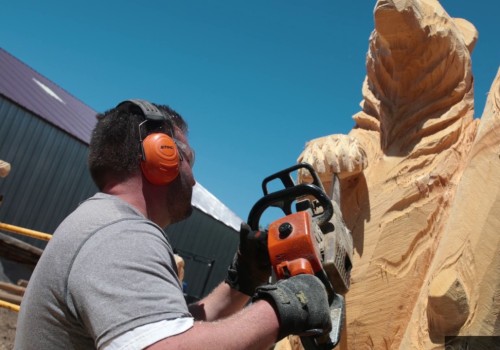

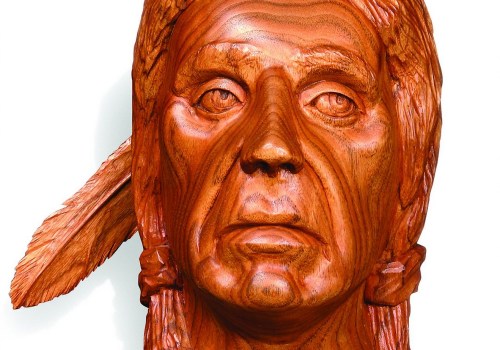

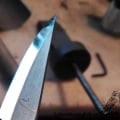
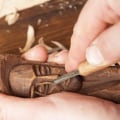
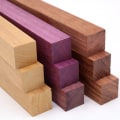

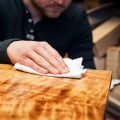
Leave a Comment